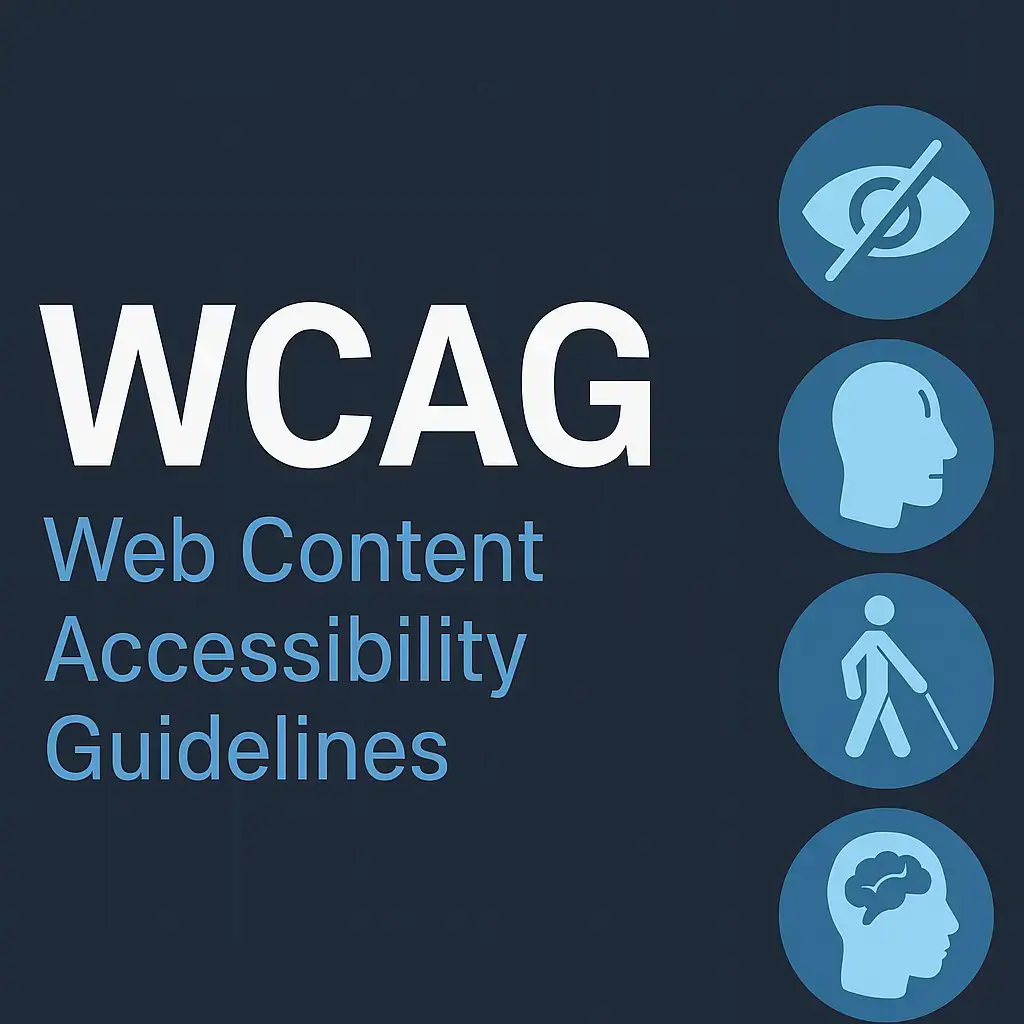
In today’s digital-first environment, WCAG Compliance has become an essential standard for websites and applications aiming to provide equal access to all users, including those with disabilities. The Web Content Accessibility Guidelines (WCAG) offer a globally recognized framework for making web content more accessible, covering everything from visual design to site navigation. WCAG Compliance is not just about checking boxes on a list—it reflects a website’s readiness to serve diverse audiences. For businesses, educational institutions, and government organizations, meeting these guidelines is no longer optional. In 2025, compliance is expected by users, enforced by legal systems, and rewarded by search engines. Adhering to WCAG means a digital experience that works for users with screen readers, alternative input devices, and other assistive technologies. Whether it’s reading content, completing forms, or making purchases online, WCAG Compliance ensures that no user is left behind.
Digital Accessibility as a Legal Obligation
Legal actions related to accessibility have surged over the past decade, and digital inclusion is at the heart of many of these cases. Courts across the United States have made it clear that websites are places of public accommodation under the Americans with Disabilities Act (ADA). As such, failure to meet accessibility standards, particularly WCAG Compliance, can result in costly lawsuits and settlements. Most legal experts agree that following WCAG guidelines is the safest and most effective path toward meeting ADA obligations. The most recent updates to WCAG introduce even more refined criteria for ensuring accessibility, addressing a wider range of disabilities and user needs. Organizations that fall short of these evolving requirements put themselves at risk of both financial penalties and reputational damage. Proactive businesses are turning to accessibility professionals to conduct audits, make necessary updates, and implement long-term solutions. Legal compliance is no longer about avoidance—it’s a strategic responsibility.
WCAG and User-Centered Design
One of the most overlooked advantages of WCAG Compliance is the positive effect it has on user experience for all visitors, not just those with disabilities. The principles of perceivability, operability, understandability, and robustness guide developers to create digital environments that are intuitive and usable across various devices and contexts. From clearer layouts and keyboard navigation to consistent interfaces and readable content, these enhancements lead to smoother interactions and higher user satisfaction. Search engines also reward these improvements, giving accessible sites a competitive edge in rankings. Accessibility overlaps with usability, and together they define what it means to provide a quality digital experience in 2025. Organizations that embrace WCAG Compliance report fewer user complaints, higher engagement, and stronger brand loyalty. Accessibility becomes not just a compliance requirement, but a foundation for customer-centered innovation. It opens the digital door to millions of users and demonstrates that your brand values inclusivity at its core.
Implementing WCAG Compliance Strategically
Achieving and maintaining WCAG Compliance requires more than one-time fixes or automated tools. It begins with a comprehensive accessibility audit, ideally performed by professionals with both technical and usability expertise. These experts review your site against WCAG’s criteria, identifying gaps that affect real-world users. Solutions are then implemented that may include adjusting color contrast, reworking navigation structures, adding alternative text to images, and ensuring form elements are correctly labeled. Once these issues are resolved, ongoing monitoring becomes essential. As new content is added or design updates are made, accessibility must be reevaluated. Building accessibility into development and content workflows prevents regressions and supports long-term compliance. Internal teams should also receive training to understand how their work affects digital inclusion. Organizations that treat WCAG Compliance as a continuous practice rather than a temporary task position themselves for long-term success. In 2025, this approach reflects maturity in digital operations and a forward-thinking mindset.
Competitive Benefits of Digital Accessibility
Businesses that prioritize accessibility often discover it provides a measurable competitive advantage. A compliant, inclusive website invites a larger audience, including the more than one billion people worldwide living with disabilities. These users are loyal customers who appreciate and support brands that make efforts to accommodate their needs. WCAG Compliance also enhances SEO, as many accessibility best practices align with search engine algorithms. For example, properly structured content, accurate metadata, and clear navigation improve both discoverability and performance. In industries like e-commerce, education, healthcare, and finance, accessibility also helps meet regulatory requirements and contract eligibility standards. Beyond technical metrics, the social impact of compliance builds trust and public goodwill. Companies that lead in accessibility are viewed as responsible and ethical, which can influence investor confidence and partner relationships. By embedding WCAG Compliance into their digital strategy, these organizations set themselves apart in an increasingly competitive digital marketplace.
FAQs
What is WCAG Compliance?
WCAG Compliance refers to adherence to the Web Content Accessibility Guidelines, which outline how to make digital content accessible to people with various disabilities. It ensures websites and applications are usable for all audiences.
Who is responsible for maintaining WCAG Compliance?
Everyone involved in the digital product lifecycle shares responsibility—designers, developers, content creators, and leadership teams must work together to maintain compliance over time.
How often should WCAG Compliance be reviewed?
It should be reviewed regularly, especially during major updates, design changes, or new feature implementations. Annual audits combined with continuous monitoring are considered best practice.
Can automated tools ensure WCAG Compliance?
Automated tools can identify some issues but cannot replace manual testing. Human review is necessary to catch complex problems, especially those affecting user experience and assistive technology compatibility.
Is WCAG Compliance legally required?
While WCAG itself is not law, it is the recognized standard for meeting accessibility laws such as the ADA and Section 508. Courts and regulators frequently refer to WCAG in legal actions and settlements.
Conclusion
Accessibility has moved from a niche concern to a central requirement in digital strategy. Achieving WCAG Compliance is no longer just a technical goal—it’s a commitment to equity, legal responsibility, and user satisfaction. Businesses that invest in accessibility position themselves to avoid legal risks, expand their reach, and demonstrate leadership in corporate responsibility. With the digital world growing more complex and diverse, ensuring everyone can participate is not just right—it’s smart business. If your organization is ready to take digital inclusion seriously, Contact Us to begin your accessibility journey. With trusted support from ecomback, you’re one step closer to building a truly inclusive digital presence.
